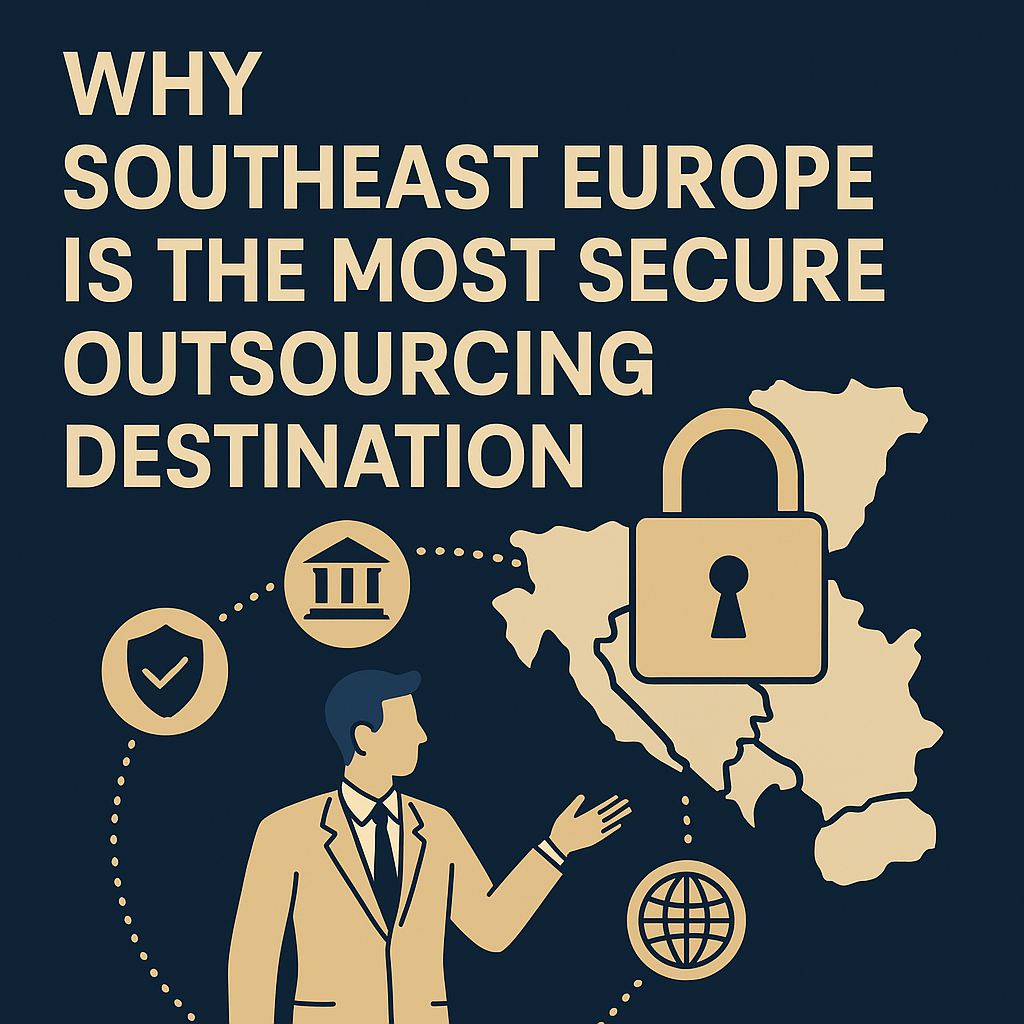Why Southeast Europe Is the Most Secure Nearshoring Destination in 2025
Introduction: Stability is the New Premium
In a time when international conflict and political volatility are reshaping global outsourcing strategies, one region quietly emerges as a beacon of security, stability, and resilience: Southeast Europe (SEE). With escalating tensions from India-Pakistan to Israel-Iran and ongoing uncertainty in Russia-Ukraine, business leaders are reevaluating their offshore models. This blog explores why SEE is becoming the preferred destination for companies seeking continuity, compliance, and confidence in their outsourcing operations.
A Shifting Global Outsourcing Landscape
Traditional outsourcing giants like India, the Philippines, and Ukraine are facing new challenges. Political instability, geopolitical risks, and regional conflicts are no longer isolated events—they are impacting service delivery, workforce availability, and data security on a global scale.
- India–Pakistan tensions have reignited concerns about regional cyber vulnerabilities and operational risks, especially in fintech and healthcare outsourcing.
- The Israel–Iran conflict has intensified cyberwarfare and disrupted tech operations in the Middle East.
- The Russia–Ukraine war has led many companies to relocate operations and IT development centers due to concerns about service continuity and physical security.
In contrast, Southeast Europe—including Bosnia and Herzegovina, Serbia, Romania, and Croatia—has experienced a decade of political normalization, EU integration, and investment in digital infrastructure.
The Security Pillars of SEE Outsourcing
1. Geopolitical Stability and EU Integration
SEE countries are either EU members or on the path to accession. This ensures alignment with European regulatory frameworks (like GDPR), promotes economic stability, and significantly reduces the risk of service interruptions due to geopolitical shocks.
2. Cybersecurity by Design
The region’s BPO and IT firms are increasingly ISO 27001-certified and implement EU-compliant data protection measures. In Bosnia and Serbia, for example, leading providers offer secure VPN environments, zero-trust network access (ZTNA), and 24/7 monitoring.
3. Resilient Talent Ecosystem
STEM education is deeply rooted in countries like Romania and Bulgaria. Government-backed digital literacy programs and strong English (and German) proficiency make SEE a sustainable talent hub.
“A global e-commerce provider working with a SEE-based vendor reported a 99.8% service uptime during a period when other offshore teams faced outages due to regional instability.”
4. Nearshoring & Proximity Advantage
From Vienna or Munich, most SEE capitals are reachable in under two hours. This allows real-time collaboration, shared time zones, and lower CO2 emissions for site visits compared to Asian or African destinations.
5. Infrastructure and Investment Growth
SEE benefits from EU funding for broadband expansion, digital transformation, and SME support. The World Bank lists Serbia and Bosnia among Europe’s fastest-growing ICT service exporters.
Best Practices for Companies Seeking Secure Outsourcing
- Implement a Nearshoring Evaluation Framework: Assess outsourcing destinations not only by cost but by geopolitical risk, legal compliance, and digital maturity.
- Request Certifications: Ensure providers are ISO 27001- and GDPR-compliant. Ask for ZTNA protocols and local regulatory adherence.
- Run Operational Simulations: Conduct business continuity and disaster recovery (BC/DR) tests with your SEE vendor.
- Utilize Hybrid Teams: Blend on-site, nearshore, and remote operations for maximum agility.
Lessons from the Field
A multinational energy firm transferred its back-office operations from Ukraine to a SEE location in 2023. The result? Improved data protection audit scores, faster recovery times, and increased client confidence in SLA adherence.
Another case: A Swiss-based healthcare tech company moved its Tier 1 support from India to Bosnia. In addition to higher data compliance, they reported improved first-call resolution rates and better language compatibility with their DACH clients.
Conclusion: SEE as the Strategic Choice
In an era where uncertainty is the only certainty, Southeast Europe offers something increasingly rare: stability. As conflicts around the globe continue to challenge outsourcing models, SEE stands out as a strategic, secure, and future-ready alternative. With political alignment, digital resilience, and cultural proximity, the region is not just a backup—it’s a new benchmark. To explore secure nearshoring in SEE or learn how SEEOS can guide your outsourcing journey, visit our services page or check out related posts on our blog.
External Sources:
